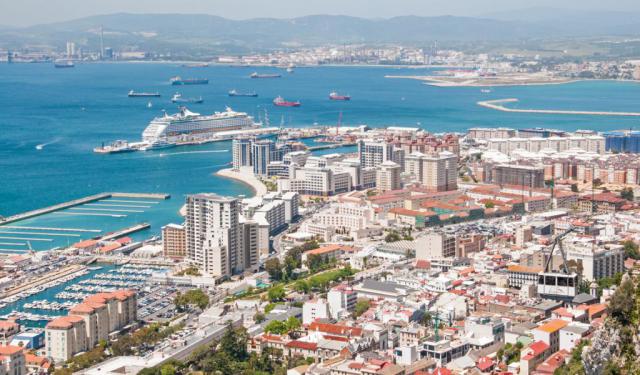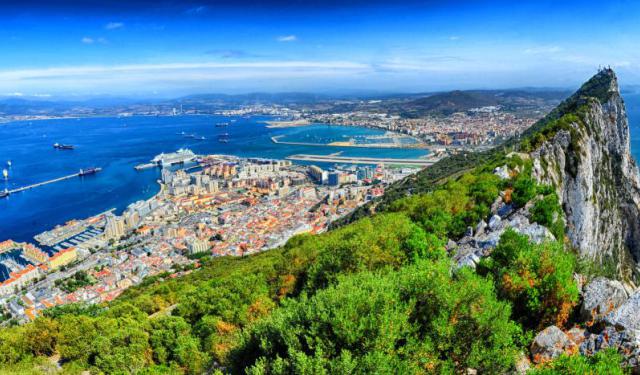Great Siege Tunnels, Gibraltar (must see)
The Upper Galleries, also known as the Great Siege Tunnels, is an intricate network of tunnels situated within the northern section of the Rock of Gibraltar, a British Overseas Territory. These tunnels were painstakingly carved out of solid limestone by the British forces during the late 18th century's Great Siege of Gibraltar.
The Great Siege of Gibraltar took place during the American Revolutionary War when France and Spain sought to capture Gibraltar from Great Britain. Spanning from July 1779 to February 1783, it marked the fourteenth and final siege of Gibraltar. The motivation behind constructing the tunnels stemmed from the garrison's necessity to cover a blind spot on the Rock's northeast side. The only viable solution was to position a gun on a rock spur referred to as The Notch.
The laborious task was executed manually, primarily employing sledgehammers, crowbars, and the aid of gunpowder explosions. Initially, progress was slow, with a team of thirteen men requiring five weeks to dig an 82-foot (25 m) long tunnel. The diggers faced challenges from noxious fumes and dust resulting from frequent blasting. Consequently, a horizontal shaft was blasted to enhance ventilation, which unexpectedly yielded an additional advantage.
By the completion of the initial phase of tunneling, five galleries were excavated: Windsor Gallery, King's and Queen's Lines, St. George's Hall, and Cornwallis Chamber. The Windsor Gallery constituted the first segment of the tunnel system and housed four mounted guns. St. George's Hall stood as the largest of the original galleries, and the embrasures on the Rock's slopes could be observed when approaching Gibraltar from both land and sea.
The onset of World War II led to increased tunnel construction. Extensive work was done to accommodate 16,000 soldiers with supplies for a year. The Great Siege Tunnels were repurposed, including an extension known as the Holyland Tunnel. A staircase was also built to connect the Tunnels to the Middle Galleries.
Presently, the Great Siege Tunnels are accessible as part of the Upper Rock Nature Reserve, offering visitors the opportunity to explore their historical significance.
The Great Siege of Gibraltar took place during the American Revolutionary War when France and Spain sought to capture Gibraltar from Great Britain. Spanning from July 1779 to February 1783, it marked the fourteenth and final siege of Gibraltar. The motivation behind constructing the tunnels stemmed from the garrison's necessity to cover a blind spot on the Rock's northeast side. The only viable solution was to position a gun on a rock spur referred to as The Notch.
The laborious task was executed manually, primarily employing sledgehammers, crowbars, and the aid of gunpowder explosions. Initially, progress was slow, with a team of thirteen men requiring five weeks to dig an 82-foot (25 m) long tunnel. The diggers faced challenges from noxious fumes and dust resulting from frequent blasting. Consequently, a horizontal shaft was blasted to enhance ventilation, which unexpectedly yielded an additional advantage.
By the completion of the initial phase of tunneling, five galleries were excavated: Windsor Gallery, King's and Queen's Lines, St. George's Hall, and Cornwallis Chamber. The Windsor Gallery constituted the first segment of the tunnel system and housed four mounted guns. St. George's Hall stood as the largest of the original galleries, and the embrasures on the Rock's slopes could be observed when approaching Gibraltar from both land and sea.
The onset of World War II led to increased tunnel construction. Extensive work was done to accommodate 16,000 soldiers with supplies for a year. The Great Siege Tunnels were repurposed, including an extension known as the Holyland Tunnel. A staircase was also built to connect the Tunnels to the Middle Galleries.
Presently, the Great Siege Tunnels are accessible as part of the Upper Rock Nature Reserve, offering visitors the opportunity to explore their historical significance.
Want to visit this sight? Check out these Self-Guided Walking Tours in Gibraltar. Alternatively, you can download the mobile app "GPSmyCity: Walks in 1K+ Cities" from Apple App Store or Google Play Store. The app turns your mobile device to a personal tour guide and it works offline, so no data plan is needed when traveling abroad.
Great Siege Tunnels on Map
Sight Name: Great Siege Tunnels
Sight Location: Gibraltar, Gibraltar (See walking tours in Gibraltar)
Sight Type: Attraction/Landmark
Guide(s) Containing This Sight:
Sight Location: Gibraltar, Gibraltar (See walking tours in Gibraltar)
Sight Type: Attraction/Landmark
Guide(s) Containing This Sight:
Walking Tours in Gibraltar, Gibraltar
Create Your Own Walk in Gibraltar
Creating your own self-guided walk in Gibraltar is easy and fun. Choose the city attractions that you want to see and a walk route map will be created just for you. You can even set your hotel as the start point of the walk.
Gibraltar Introduction Walking Tour
“Burn your boats,” ordered the Berber commander Tariq ibn Ziyad as his troops trembled before the towering Rock of Gibraltar in 711 AD. Having just crossed from North Africa with a small army to confront the Visigothic Kingdom, Tariq destroyed his ships to eliminate the option of retreat. With no way back, his men fought with determination and went on to conquer most of the Iberian Peninsula.... view more
Tour Duration: 1 Hour(s)
Travel Distance: 1.9 Km or 1.2 Miles
Tour Duration: 1 Hour(s)
Travel Distance: 1.9 Km or 1.2 Miles
Rock of Gibraltar Walking Tour
You really can’t avoid the Rock of Gibraltar when visiting the British Overseas Territory on the southern tip of the Iberian Peninsula. Just like the streets lined with British-style red phone booths and historical buildings, this prominent limestone rock formation, overlooking the Strait of Gibraltar from an elevation of 426 meters (1,398 feet) above sea level, creates a distinctive atmosphere... view more
Tour Duration: 2 Hour(s)
Travel Distance: 4.5 Km or 2.8 Miles
Tour Duration: 2 Hour(s)
Travel Distance: 4.5 Km or 2.8 Miles





